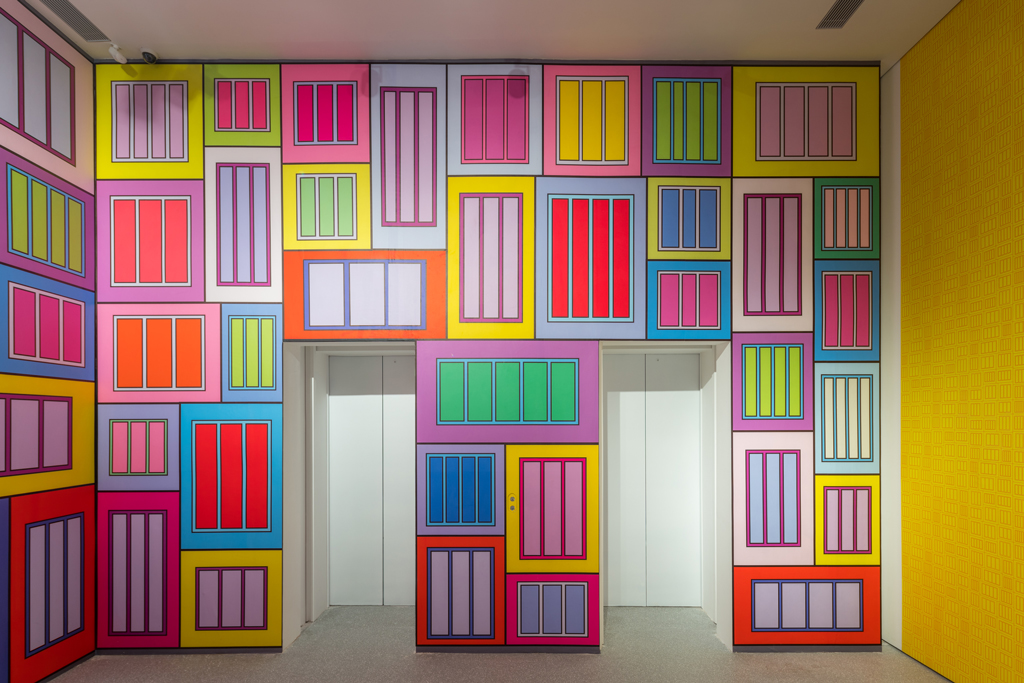[ad_1]
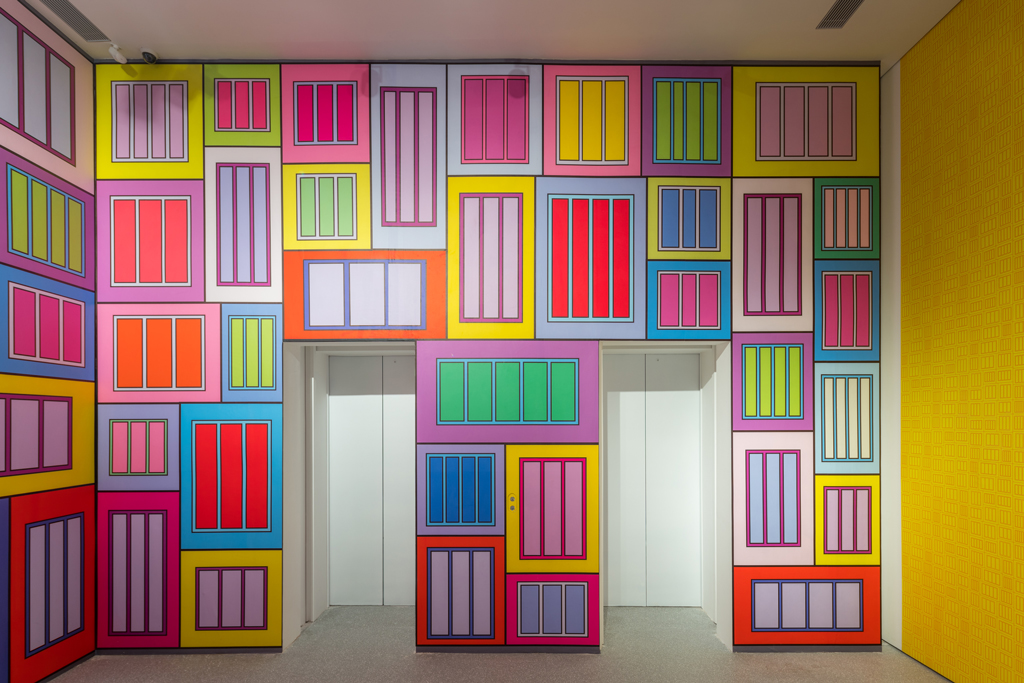
Peter Halley, Prisons, 2018, digital print on vinyl, installation view in “Emerald City.”
COURTESY THE ARTIST/COMMISSIONED BY K11 ART FOUNDATION
A bright spot in the crush of exhibitions taking place in Hong Kong during Art Basel in March was “Emerald City,” presented by the K11 Art Foundation at a pop-up space near Queen’s Road. A quizzical and highly original take on the collision of Euclidean geometry and social structures, “Emerald City” featured artists such as Ashley Bickerton, Chen Zhou, Peter Halley, Liu Chuang, Oscar Murillo, and Adrián Villar Rojas, juxtaposing emerging Chinese artists with top international players. In previous years, the KAF collaborated with a foreign institution, like MoMA PS1 or the New Museum, on its Basel show, but this time Venus Lau, KAF’s recently hired artistic director, handled curatorial duties. This step represented a new phase and a new level of maturity for a foundation that has been wielding international influence since its founding in 2010.
“A lot of people didn’t realize that we have a strong team that can curate our perspective towards the world because we collaborated with a lot of Western institutions,” said Hong Kong developer Adrian Cheng, 38, who launched the K11 brand as executive vice chairman of the $9.4 billion New World Development real-estate and retail empire founded by his grandfather Cheng Yu-tung. Cheng’s chain of K11 shopping malls all feature exhibition spaces and public artworks by the likes of Damien Hirst and Takashi Murakami. But he provides even more support for contemporary art through his K11 Art Foundation, which, in addition to overseeing the shows at his retail outlets, provides opportunities for young Chinese artists, both in China and abroad.
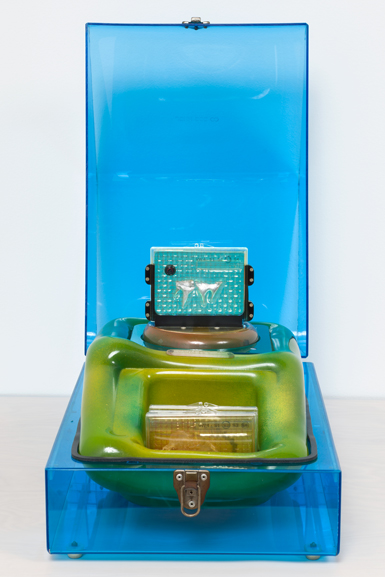
Carl Cheng’s Specimen Viewer No. 4, 1970, was included in “Emerald City,” curated by Venus Lau, at K11 Art Foundation, Hong Kong.
COURTESY THE ARTIST AND PHILIP MARTIN GALLERY
“We’ve worked with everyone—MoMA PS1, the Serpentine, Palais de Tokyo, and the Pompidou—it’s been great and we learned a lot,” Cheng said, speaking from his offices in Central. He said that, working without a partner institution “makes a statement that we have learned, we have grown and we have already become mature enough to showcase our own perspective of contemporary Chinese art in a greater context around the world.”
Lau, the new artistic director, was appointed in September, having previously served as director of OCAT Shenzhen and, earlier, as a curator at the Ullens Center for Contemporary Art in Beijing. According to Cheng, there are now about eight young curators in training under her, based in Beijing, Shanghai, and Hong Kong.
That team will be needed. There are 29 new K11 projects now in the works in China, including multi-use developments in Guangzhou, Tianjin, Shenzhen, Ningbo, and Shenyang, among other cities. One of the most ambitious projects on deck is Victoria Dockside, a $2.6 billion, 3 million-square-foot art and design district, slated for the promenade of Hong Kong’s harbor front. Set to open fully in 2019, the mixed-use development will include a 66-story commercial tower called the K11 Atelier, an ultra-luxury Rosewood Hotel, Rosewood-branded residences, several art exhibition spaces, a cinema, and a public art park leading down to the waterside with works by Villar Rojas, Elmsgreen & Dragset, Zhang Enli, and Katharina Grosse, among others. The Victoria Dockside master plan was created by the acclaimed architectural firm Kohn Pedersen Fox and renowned landscape architect James Corner Field Operations in collaboration with Cheng and more than 100 designers and consultants across the globe.
“It’s time for us to build a cultural district that harbors our voices and perspective,” Cheng said, adding, “Think of it as Roppongi Hills-slash-Miami Design District-slash Hudson Yards, everything combined together into my vision.”
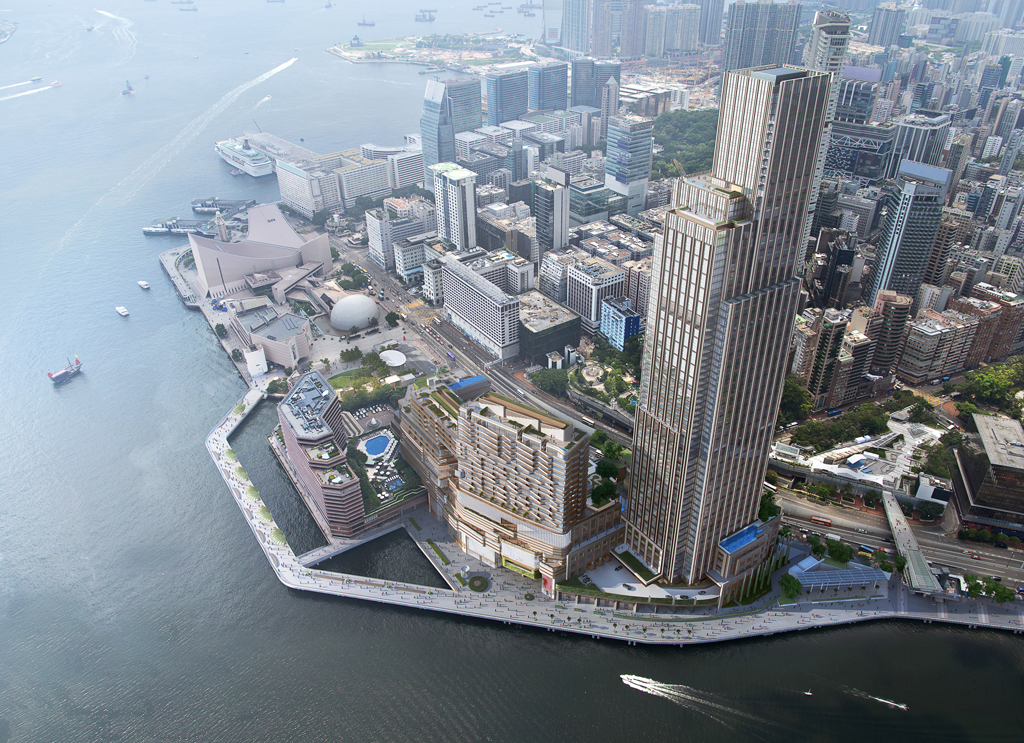
A rendering for K11’s Victoria Dockside development in Hong Kong’s Tsim Sha Tsui neighborhood.
GRESH PRODUCTIONS
Still more formidable are Cheng’s plans for a cultural district in Beijing, located near the Temple of Heaven. Up to now, K11 developments have mostly been vertical endeavors. In K11 Guangzhou, for example, the roughly 1,700-foot-tall shopping center is now the tallest building in the city. But in Beijing, K11 will create more of a neighborhood, preserving the picturesque Fa Hua temple, a garden of 1,000 trees, and the home of Qing Dynasty master Cáo Xuěqín, the author of Dream of the Red Chamber, one of the four great classical novels of Chinese literature. Cao’s home is being converted into a freestanding museum for contemporary art. The project, which will also include office and retail space stretching more than 3.2 million square feet, will open in 2021.
None of this activity prevents Cheng from his favorite pursuit: adding to his personal art collection. Admitting that he was quite busy during Art Basel Hong Kong, he shared that he bought works by Theaster Gates, Oscar Murillo, Anicka Yi, and Haegue Yang, among others, during the festivities. “I thought a lot of galleries were bringing good stuff to Asia, instead of testing the water and bringing a not very well curated booth,” he said. “I am very happy that they have more confidence and convictions and commitment towards Asia.”
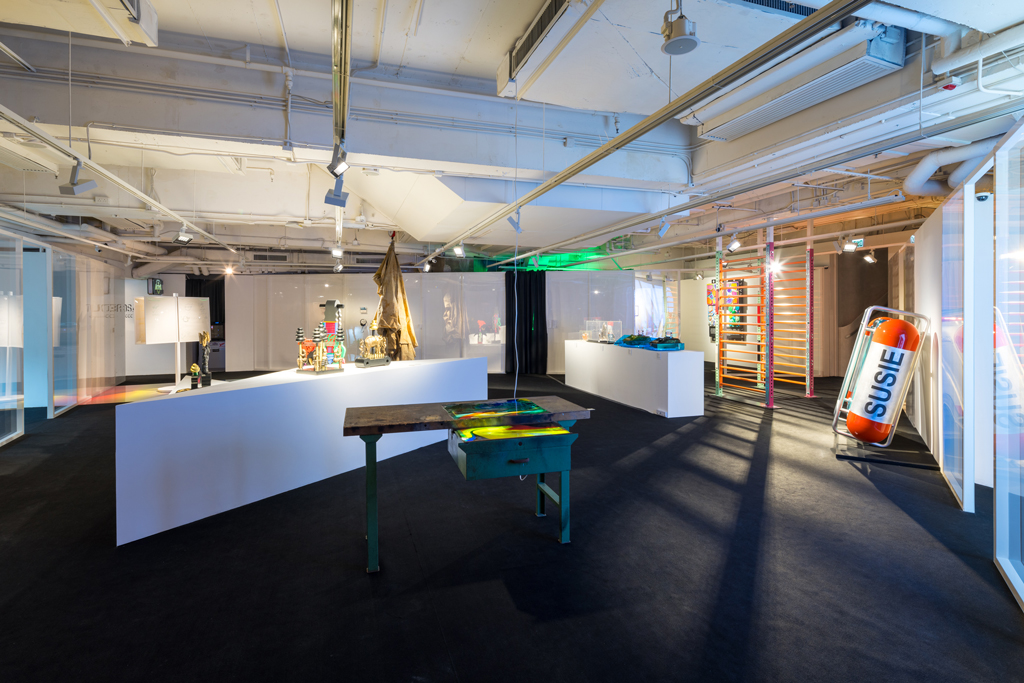
Installation view of “Emerald City,” 2018, curated by Venus Lau, at K11 Art Foundation, Hong Kong.
©K11 ART FOUNDATION
But despite all of its new endeavors, the K11 Art Foundation will not entirely be abandoning its strategy of collaborating with international institutions, Cheng said. This summer, KAF will sponsor a three-month residency by Shanghai artist Zhang Enli at London’s Royal Academy of Arts, where he will enlist the help of life drawing students as he revisits the figurative work of his early career in the 1990s. The resulting works will be exhibited in the school’s Academician’s Room, a private club for artists and connoisseurs, curated by RA director Tim Marlow.
“We are continuing with other partnerships but we are exploring something new,” Cheng said. “I’m still thinking, but I know we are looking more into curating our own content and are pushing more resources into developing our own curators and Chinese artists where the content will be something very interesting.”
Cheng said that he was soon planning to travel, in order to meet with international institutions about possible future projects. But, he emphasized, “I want to evolve.”
[ad_2]
Source link

